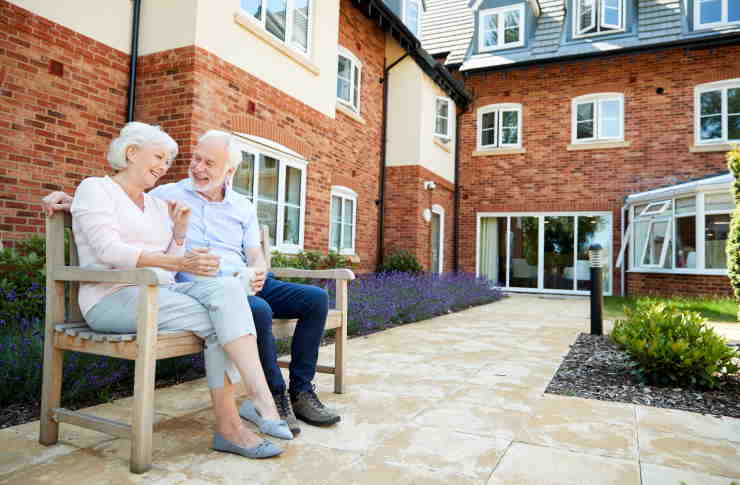Gated Retirement Communities: The Safe and Social Choice for Seniors
Gated retirement communities have become increasingly popular among seniors seeking a balance of independence, security, and social engagement. These planned residential developments offer controlled access, age-restricted housing, and comprehensive amenities designed specifically for older adults. As the population ages and housing preferences evolve, understanding the benefits and considerations of gated retirement living helps seniors and their families make informed decisions about this lifestyle choice.

Why Security and Peace of Mind Matter in Retirement Living
Security concerns often drive seniors toward gated communities, where controlled access points and security personnel provide multiple layers of protection. These communities typically feature 24-hour security monitoring, visitor screening protocols, and well-lit common areas that reduce safety risks. Emergency response systems are often integrated throughout the development, allowing residents to quickly summon help when needed.
The peace of mind extends beyond physical security to include protection of property and personal belongings. Gated communities generally experience lower crime rates compared to traditional neighborhoods, creating an environment where residents feel comfortable walking alone, leaving doors unlocked, and engaging in outdoor activities without constant worry about safety.
Building Community and Social Connections in Retirement
Social isolation poses significant health risks for aging adults, making the community aspect of gated retirement living particularly valuable. These developments are designed to foster interaction through shared spaces, organized activities, and common interests among residents. Regular social events, hobby clubs, and volunteer opportunities create natural networking environments where meaningful friendships can develop.
The age-restricted nature of these communities means residents share similar life stages and experiences, facilitating deeper connections and mutual understanding. Many communities feature clubhouses, community centers, and outdoor gathering spaces that serve as focal points for social interaction and community building.
Enhanced Amenities and Lifestyle Options
Modern gated retirement communities offer resort-style amenities that support active aging and diverse interests. Common facilities include fitness centers with senior-appropriate equipment, swimming pools, tennis courts, golf courses, and walking trails. Many communities also provide educational programs, art studios, libraries, and computer centers that encourage lifelong learning and creativity.
Restaurant-style dining options, concierge services, and transportation assistance add convenience to daily life. Some communities feature on-site medical facilities, salons, and retail services that reduce the need to leave the development for routine needs.
The Appeal of Maintenance-Free Living
One of the most attractive aspects of gated retirement communities is the elimination of home maintenance responsibilities. Exterior maintenance, landscaping, snow removal, and common area upkeep are handled by the community management, allowing residents to focus on enjoying their retirement rather than maintaining property.
This maintenance-free approach extends to many interior services as well, with some communities offering housekeeping, laundry services, and minor repair assistance. The reduction in maintenance responsibilities can significantly improve quality of life for seniors who may struggle with physical limitations or simply prefer to spend their time on other activities.
| Community Type | Average Monthly Cost | Key Features | Entry Requirements |
|---|---|---|---|
| Active Adult Communities | $2,500 - $4,500 | Golf courses, fitness centers, social clubs | Age 55+ restriction |
| Continuing Care Communities | $3,500 - $8,000 | Healthcare services, multiple care levels | Health assessment, entrance fee |
| Luxury Gated Communities | $4,000 - $12,000 | Premium amenities, concierge services | Financial qualification, age restriction |
Prices, rates, or cost estimates mentioned in this article are based on the latest available information but may change over time. Independent research is advised before making financial decisions.
Financial Considerations and Home Value Impact
Gated retirement communities operate under various financial models, including rental arrangements, purchase options, and continuing care contracts. Entry fees can range from modest to substantial, depending on the community’s amenities and location. Monthly fees typically cover maintenance, utilities, amenities access, and various services.
Property values within gated retirement communities tend to remain stable due to age restrictions and community standards that maintain aesthetic appeal. However, resale markets can be limited since potential buyers must meet age requirements and community approval processes. Some communities restrict rental arrangements, which can impact investment flexibility.
The long-term financial implications should be carefully evaluated, including potential fee increases, healthcare cost coverage, and estate planning considerations. Many communities require financial disclosure and proof of ability to cover ongoing expenses before accepting new residents.
Understanding the value proposition of gated retirement communities requires balancing the costs against the benefits of security, social connections, amenities, and maintenance-free living. For many seniors, these communities provide an ideal environment for active, engaged retirement living while addressing common concerns about safety, social isolation, and home maintenance. The decision ultimately depends on individual preferences, financial resources, and lifestyle priorities, making thorough research and community visits essential steps in the selection process.




